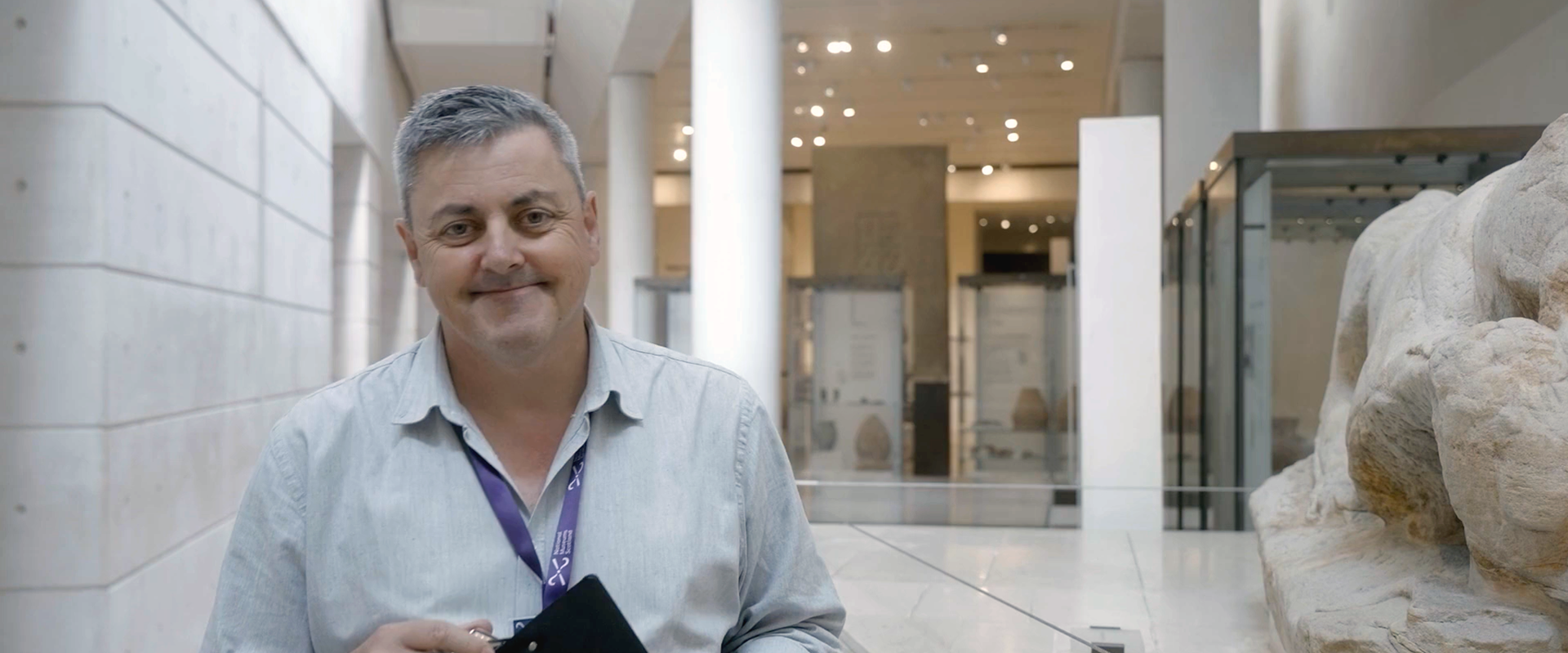Key in a search term below to search our website.
Key in a search term below to search our website.

Who
Donnie McCathie, Visitor Experience Manager
Where
National Museum of Scotland
“When I grow up, I want to be the oldest man in Scotland...
The Deskford carnyx (IL.2011.1.1) is the head of an Iron Age trumpet.
Found in the north-east of Scotland around 1816, it is a masterpiece of early Celtic art, shaped to resemble a wild boar with its upturned snout and decoration mirroring the folds of skin around a boar’s face. It is a complex composite construction, wrought from sheet bronze and brass.
This helps us date it, because brass is not native to Scotland: it represents recycled Roman metal. Along with other evidence, this suggests a date between c. AD 80 and 250 for its construction.
Find out more about the carnyx, including videos featuring the sound it made.
The Roman stone from Bridgeness (X.FV 27), in modern Bo’ness, on the Firth of Forth, is one of the finest pieces of Roman sculpture from Britain.
It commemorated the construction of the eastern end of the Antonine Wall, the frontier built by the Romans across the narrowest part of Scotland between the Forth and Clyde estuaries, when they conquered southern Scotland in the 140s AD.
Andy Goldsworthy's piece Stacked Whalebones, 2001 (X.2012.21) is comprised of the complete skeleton of a Pilot whale that beached on the coast of Northumberland at Beadnell on 23 October 1997.
It was a male and just over 5 metres long. The sculpture is placed in the context of the gallery where we explore objects made from bone.
The Orkney Hood is the only complete piece of clothing from before the medieval period in Scotland.
Its story began in an Orkney peat bog over 1,500 years ago, where it was either accidentally lost or purposely left. We'll never know which, or why.
The diorama in our Beginnings Gallery on Level -1 shows how the Arctic tundra at the end of the last Ice Age was replaced by oak forests in the Lowlands and pine forests in the Highlands. It is based on evidence from relict species, fossils, pollen analysis and radiocarbon dating.
See some of the animals in the diorama on our Scottish wildlife page.
This imposing stone monument (X.1997.6) was discovered mired in mud at the mouth of the River Almond in Cramond, Edinburgh.
It is probably a memorial for a high ranking Roman officer. The sculpture expresses the widespread symbolism of death and depicts a lioness devouring a naked bearded man. He has his hands tied behind his back, and represents a captive, probably a local Caledonian. The two snakes on the base symbolise survival of the soul.